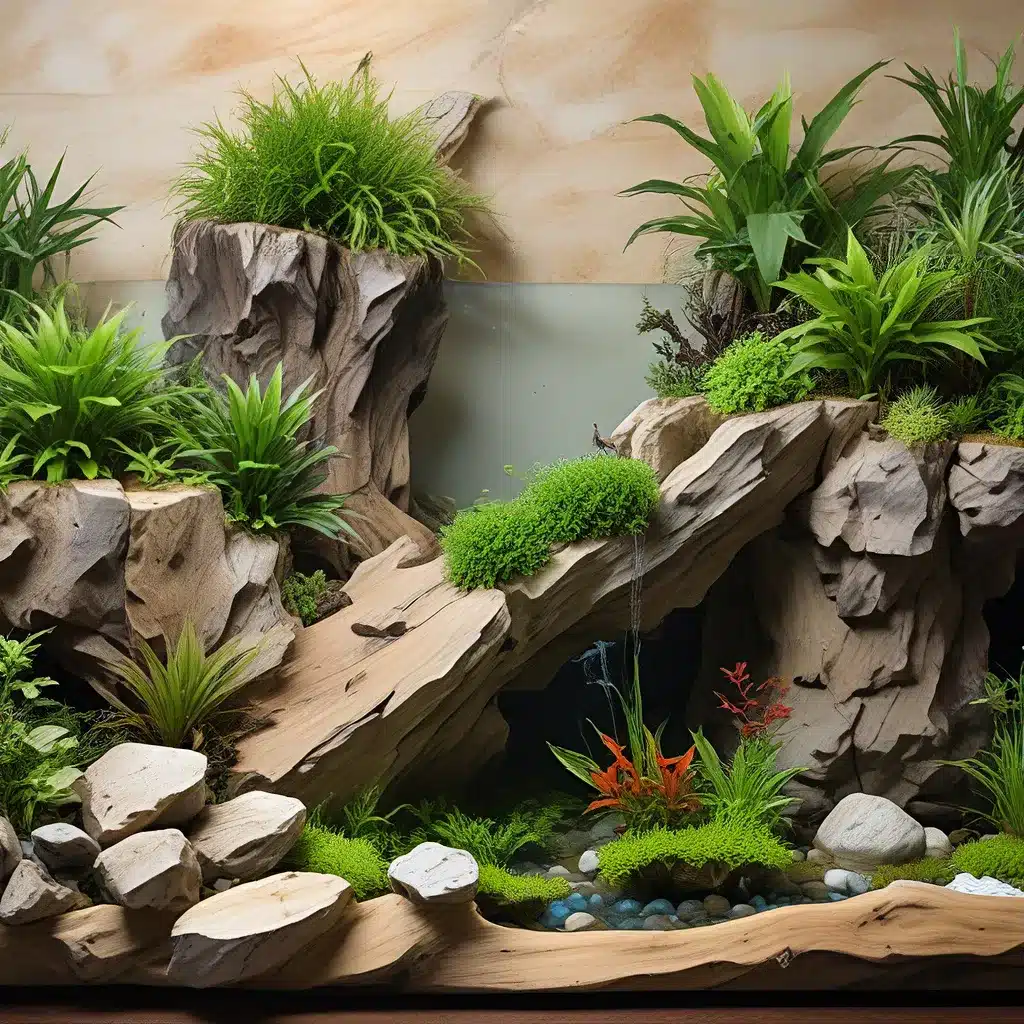
Unlocking the Essence of Wabi-Sabi in Aquarium Design
Aquascaping, the art of creating visually stunning underwater landscapes, has captivated the aquarium community for decades. While the pursuit of aesthetic perfection has long been a driving force, a growing number of hobbyists are embracing a more nuanced approach – one that celebrates the impermanence and imperfection inherent in nature. This philosophy, known as Wabi-Sabi, offers a refreshing perspective on aquarium design and maintenance.
At the heart of Wabi-Sabi lies the acceptance of the natural cycle of growth, decay, and renewal. In the context of aquascaping, this translates to an appreciation for the ephemeral beauty of natural materials, such as hardwood and stone, as they gradually transform over time. Unlike the static, symmetrical arrangements often seen in competition-driven aquascapes, Wabi-Sabi-inspired designs embrace the dynamic, ever-evolving nature of the underwater world.
As Scott Fellman of Tannin Aquatics eloquently explains, “Leaves and such are simply not permanent additions to our scapes, and if we wish to enjoy them in their more intact forms, we will need to replace them as they start to break down. This is not a bad thing. It is simply how to use them to create a specific aesthetic in a permanent aquarium display.”
Incorporating Hardwood and Stone Elements
When it comes to creating a Wabi-Sabi-inspired aquascape, the thoughtful use of hardwood and stone elements is key. Unlike the fleeting nature of aquatic plants and botanicals, these more permanent fixtures serve as the backbone of the design, providing a sturdy foundation upon which the aquarium’s ever-changing beauty can unfold.
Hardwood: Carefully selected pieces of driftwood, with their intricate, gnarled textures and natural curves, can become the centerpiece of an aquascape. As they gradually become submerged, the wood may release tannins, which can tint the water and create a rich, earthy ambiance. Over time, the wood may develop a biofilm or become home to various aquatic organisms, adding to the overall sense of organic growth and evolution.
Stone: Carefully placed boulders, rocks, and pebbles can add depth, structure, and visual interest to an aquascape. Stone elements, with their varying shapes, sizes, and hues, can be used to create a sense of rugged, natural beauty. As the aquarium matures, the stones may become coated with algae or moss, further enhancing the natural, lived-in aesthetic.
By combining these hardwood and stone elements, aquarists can craft aquascapes that reflect the essence of Wabi-Sabi – a harmonious balance between the permanent and the impermanent, the perfect and the imperfect.
Embracing the Transience of Aquatic Botanicals
While hardwood and stone provide the foundation for a Wabi-Sabi-inspired aquascape, the addition of aquatic botanicals, such as leaves, pods, and seed heads, can elevate the design to new levels of depth and character.
These natural materials, with their inherent tendency to decompose and transform over time, embody the very essence of the Wabi-Sabi philosophy. As Fellman explains, “Leaves and such are simply not permanent additions to our scapes, and if we wish to enjoy them in their more intact forms, we will need to replace them as they start to break down. This is not a bad thing. It is simply how to use them to create a specific aesthetic in a permanent aquarium display.”
By intentionally incorporating these transient elements, aquarists can create a sense of ever-changing beauty and capture the fleeting moments of nature. As the botanicals decay, they release tannins and humic acids, enriching the water and providing valuable nutrients for the aquatic ecosystem. This natural cycle of growth, decomposition, and renewal reflects the Wabi-Sabi principle of embracing impermanence.
Balancing Permanence and Impermanence
Achieving the perfect balance between permanent and impermanent elements is the key to crafting a truly captivating Wabi-Sabi-inspired aquascape. While the hardwood and stone structures provide a stable foundation, the addition of aquatic botanicals and the gradual transformation of the entire system create a sense of dynamism and unpredictability.
As hobbyists explore this approach to aquascaping, they may encounter both enthusiastic supporters and skeptics. Some may appreciate the beauty in the ever-changing nature of the aquascape, while others may perceive it as “sloppy” or “random.”
However, as Fellman notes, “The real beauty is that there are no real rules when conceiving such a scape, other than the biological aspects of decomposition and water chemistry which are the real factors that dictate just how the aquascape will ultimately evolve. Accepting this inevitable change and imperfection is the very essence – and beauty – of the Wabi-Sabi principle.”
Embracing the Journey: Aquascaping as a Continuous Exploration
Ultimately, the beauty of a Wabi-Sabi-inspired aquascape lies in the journey of discovery, as the aquarist and the aquarium’s inhabitants collectively navigate the ebb and flow of the underwater ecosystem. By embracing the inherent imperfections and transience of nature, aquarists can cultivate a deeper appreciation for the ever-evolving beauty of their aquatic creations.
As you embark on your own aquascaping adventures, remember to stay open-minded, creative, and intrigued by the possibilities that the Wabi-Sabi philosophy can offer. Celebrate the fleeting moments of beauty, cherish the gradual transformation of your aquarium, and find solace in the knowledge that true perfection lies not in static forms, but in the dynamic interplay of light, water, and life.

